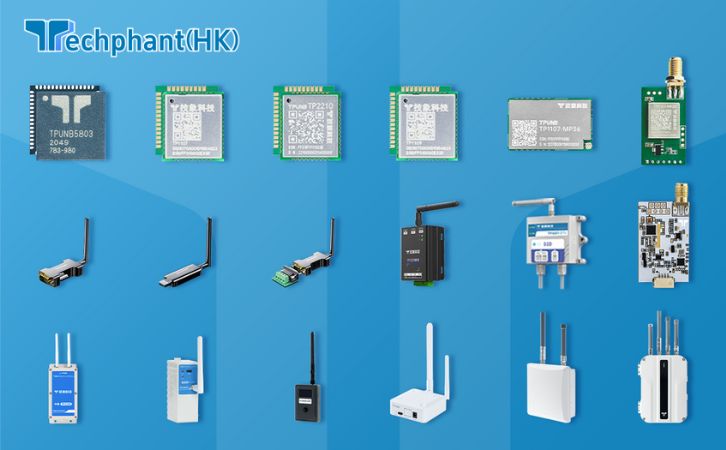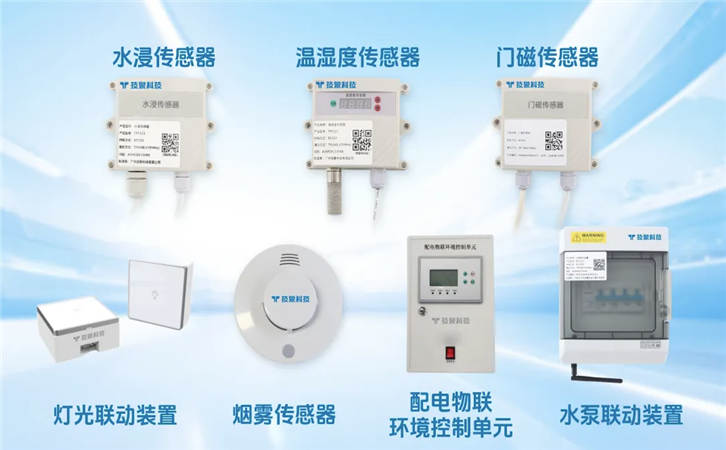The Internet of Things (IoT) has transformed how devices communicate, enabling seamless data exchange across industries. Among the various wireless technologies powering IoT, Sub-GHz radio frequencies (below 1 GHz) have emerged as a robust solution due to their long-range capabilities, low power consumption, and ability to penetrate obstacles. Operating in bands like 433 MHz, 868 MHz, and 915 MHz, Sub-GHz technologies are ideal for IoT applications where reliability and efficiency are paramount. This article explores the key applications of Sub-GHz in IoT ecosystems, detailing their advantages and use cases across four critical domains.
I. Smart Metering and Utility Management
Sub-GHz technologies are widely adopted in smart metering for utilities such as electricity, water, and gas. These systems require long-range communication to transmit consumption data from residential or industrial meters to central hubs, often over distances exceeding several kilometers. Sub-GHz’s ability to achieve ranges of up to 10-20 km in open environments makes it ideal for this purpose. Additionally, its low power consumption ensures that battery-powered meters can operate for over a decade without replacement, reducing maintenance costs.
Protocols like Wireless M-Bus, LoRaWAN, and Sigfox, which operate in Sub-GHz bands, enable reliable data transmission even in dense urban settings where buildings and infrastructure may obstruct signals. For example, LoRaWAN’s modulation techniques allow meters to communicate through walls and other barriers, ensuring consistent connectivity. In smart water metering, Sub-GHz systems detect leaks or irregular usage patterns by sending real-time data to utilities, enabling rapid response to conserve resources. Furthermore, Sub-GHz’s low data rate is sufficient for the small payloads typical in metering (e.g., periodic usage reports), optimizing bandwidth and energy use.
The scalability of Sub-GHz networks also supports large-scale deployments. Utilities can manage thousands of meters within a single network, with gateways aggregating data for analysis. This capability is critical in smart grid applications, where Sub-GHz facilitates demand-response systems, allowing utilities to balance loads during peak times. By integrating Sub-GHz into smart metering, utilities enhance operational efficiency, reduce costs, and promote sustainable resource management.
II. Industrial IoT and Asset Tracking
In Industrial IoT (IIoT), Sub-GHz technologies are instrumental in monitoring and managing assets across large facilities, such as factories, warehouses, and logistics hubs. The ability of Sub-GHz signals to penetrate concrete walls, metal structures, and other industrial obstacles ensures reliable communication in challenging environments. This is particularly valuable for asset tracking, where sensors monitor the location, condition, and status of equipment, inventory, or vehicles.
Sub-GHz-based protocols like LoRaWAN and Zigbee enable low-power, long-range tracking systems. For instance, in a warehouse, Sub-GHz tags attached to pallets or machinery can transmit location data to a central system over distances of several kilometers, even in non-line-of-sight conditions. These systems support real-time inventory management, reducing losses and optimizing supply chains. In manufacturing, Sub-GHz sensors monitor equipment health, detecting vibrations, temperature, or pressure anomalies to predict maintenance needs, thus minimizing downtime.
The low power requirements of Sub-GHz are critical for IIoT applications, as many devices operate on batteries in remote or hard-to-access locations. For example, in oil and gas facilities, Sub-GHz sensors monitor pipelines over vast areas, transmitting data on pressure or leaks without frequent battery replacements. Additionally, Sub-GHz’s resistance to interference from other wireless technologies (e.g., Wi-Fi or Bluetooth) ensures robust performance in crowded industrial settings. By leveraging Sub-GHz, IIoT ecosystems achieve greater reliability, scalability, and cost-effectiveness in asset management and operational monitoring.
III. Smart Cities and Environmental Monitoring
Sub-GHz technologies play a pivotal role in smart city initiatives, enabling applications like environmental monitoring, traffic management, and public safety. Their long-range and low-power characteristics make them suitable for deploying sensors across urban landscapes, where coverage and energy efficiency are critical. In environmental monitoring, Sub-GHz sensors measure air quality, noise levels, or weather conditions, transmitting data to cloud platforms for analysis and public reporting.
For instance, LoRaWAN-based Sub-GHz networks support air quality monitoring by connecting sensors that detect pollutants like PM2.5 or CO2. These sensors, often deployed on streetlights or buildings, operate for years on small batteries, providing continuous data to city planners. Similarly, Sub-GHz enables smart waste management by equipping bins with sensors that report fill levels, optimizing collection routes and reducing fuel consumption. In traffic management, Sub-GHz sensors monitor vehicle flow or parking availability, alleviating congestion and improving urban mobility.
The ability of Sub-GHz to operate in unlicensed spectrum bands reduces deployment costs, making it feasible for cities to scale networks to thousands of devices. Moreover, Sub-GHz’s deep penetration capabilities ensure connectivity in dense urban environments, where higher-frequency technologies like 2.4 GHz struggle. By integrating Sub-GHz into smart city frameworks, municipalities enhance sustainability, improve quality of life, and streamline public services.
IV. Agriculture and Precision Farming
Sub-GHz technologies are revolutionizing agriculture by enabling precision farming, where data-driven insights optimize crop yields and resource use. In rural or remote areas, where cellular or Wi-Fi coverage is limited, Sub-GHz’s long-range capabilities provide a reliable communication backbone. Sensors deployed across fields monitor soil moisture, temperature, humidity, or nutrient levels, transmitting data to farmers for real-time decision-making.
LoRaWAN, a prominent Sub-GHz protocol, supports low-bandwidth, long-range communication ideal for agricultural IoT. For example, soil moisture sensors using LoRaWAN can operate across vast farms, sending data to gateways kilometers away. This allows farmers to irrigate only when necessary, conserving water and reducing costs. Similarly, Sub-GHz-enabled weather stations provide localized forecasts, helping farmers plan planting or harvesting activities. In livestock management, Sub-GHz trackers monitor animal locations and health, ensuring timely interventions.
The low power consumption of Sub-GHz devices is critical in agriculture, where sensors may be deployed in remote areas without access to power grids. Battery-powered devices can function for years, minimizing maintenance. Additionally, Sub-GHz’s ability to operate in harsh outdoor conditions, such as rain or dust, ensures durability. By adopting Sub-GHz, farmers achieve greater efficiency, sustainability, and productivity, addressing global challenges like food security and climate change.
Conclusion
Sub-GHz technologies are a cornerstone of IoT ecosystems, offering unparalleled advantages in range, power efficiency, and signal penetration. From smart metering and industrial asset tracking to smart cities and precision agriculture, Sub-GHz enables reliable, scalable, and cost-effective solutions across diverse applications. Its ability to operate in challenging environments, coupled with low-bandwidth protocols like LoRaWAN and Sigfox, makes it ideal for IoT deployments where longevity and robustness are essential. As IoT continues to evolve, Sub-GHz will remain a critical enabler, driving innovation and sustainability in connected ecosystems worldwide.


